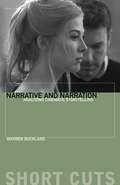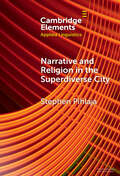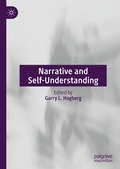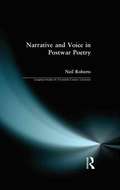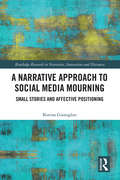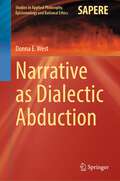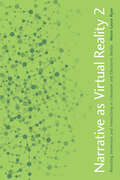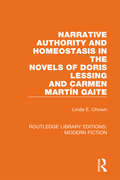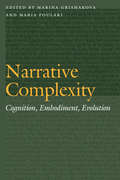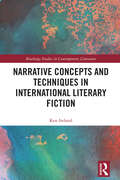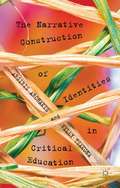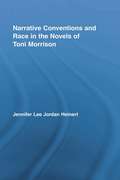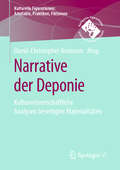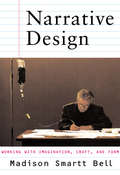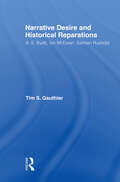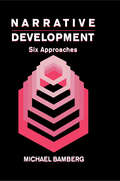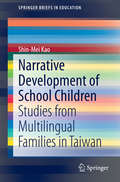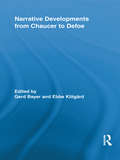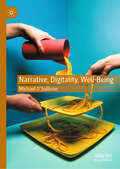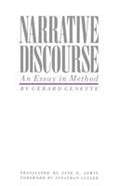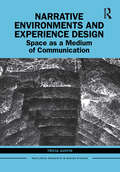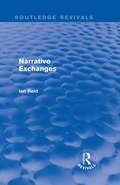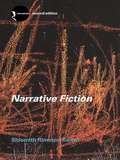- Table View
- List View
Narrative and Narration: Analyzing Cinematic Storytelling (Short Cuts)
by Warren BucklandFrom mainstream blockbusters to art house cinema, narrative and narration are the driving forces that organize a film. Yet attempts to explain these forces are often mired in notoriously complex terminology and dense theory. Warren Buckland provides a clear and accessible introduction that explains how narrative and narration work using straightforward language.Narrative and Narration distills the basic components of cinematic storytelling into a set of core concepts: narrative structure, processes of narration, and narrative agents. The book opens with a discussion of the emergence of narrative and narration in early cinema and proceeds to illustrate key ideas through numerous case studies. Each chapter guides readers through different methods that they can use to analyze cinematic storytelling. Buckland also discusses how departures from traditional modes, such as feminist narratives, art cinema, and unreliable narrators, can complicate and corroborate the book’s understanding of narrative and narration. Examples include mainstream films, both classic and contemporary; art house films of every stripe; and two relatively new styles of cinematic storytelling: the puzzle film and those driven by a narrative logic derived from video games. Narrative and Narration is a concise introduction that provides readers with fundamental tools to understand cinematic storytelling.
Narrative and Religion in the Superdiverse City (Elements in Applied Linguistics)
by Stephen PihlajaThis Element focuses on how narrative is used to construct religious identity in superdiverse contexts, considering specifically how people talk about their own religious identity, and the religious identity of others. Drawing on interviews with twenty-five participants, and numerous site visits throughout the city of Birmingham (UK), the analysis focuses on how self and other positioning is used to construct religious identity in talk about beliefs, actions, and behaviours in different contexts. Additionally, the analysis shows how conflict emerges and is resolved in spaces where people of different faiths and no faith interact, and how people talk about and understand community. Finally, a model for talking about faith in diverse contexts is presented to help people find common goals and act together towards shared interests.
Narrative and Self-Understanding
by Garry L. HagbergThis exciting new edited collection bridges the gap between narrative and self-understanding. The problem of self-knowledge is of universal interest; the nature or character of its achievement has been one continuing thread in our philosophical tradition for millennia. Likewise the nature of storytelling, the assembly of individual parts of a potential story into a coherent narrative structure, has been central to the study of literature. But how do we gain knowledge from an artform that is by definition fictional, by definition not a matter of ascertained fact, as this applies to the understanding of our lives? When we see ourselves in the mimetic mirror of literature, what we see may not just be a matter of identifying with a single protagonist, but also a matter of recognizing long-form structures, long-arc narrative shapes that give a place to – and thus make sense of – the individual bits of experience that we place into those structures. But of course at precisely this juncture a question arises: do we make that sense, or do we discover it? The twelve chapters brought together here lucidly and steadily reveal how the matters at hand are far more intricate and interesting than any such dichotomy could accommodate. This is a book that investigates the ways in which life and literature speak to each other.
Narrative and Truth
by Barry EmslieIn this book, Emslie establishes that narrative explanations are to be preferred over non-narrative in the humanities. They are more truthful in two senses. They both correspond more closely to reality and allow inference as to normative values. This is particularly the case when aesthetics are added to the mix.
Narrative and Voice in Postwar Poetry (Longman Studies In Twentieth Century Literature)
by Neil RobertsPoetry in English since the Second World War has produced a number of highly original narrative works, as diverse as Derek Walcott's Omeros, Ted Hughes' Gaudete and Anne Stevenson's Correspondences. At the same time, poetry in general has been permeated by narrative features, particularly those linguistic characteristics that Mikhail Bakhtin considered peculiar to the novel, and which he termed "dialogic". This book examines the narrative and dialogic elements in the work of a range of poets from Britain, America, Ireland, Australia and the Caribbean, including poetry from the immediate postwar years to the contemporary, and novel-like narratives to personal lyrics. Its unifying theme is the way in which these poets, with such contrasting styles and from such varied backgrounds, respond to and creatively adapt the language-worlds, and hence the social worlds in which they live. The volume includes a detailed bibliography to assist students in further study, and will be a valuable resource to undergraduate and postgraduate students of contemporary poetry.
A Narrative Approach to Social Media Mourning: Small Stories and Affective Positioning (Routledge Research in Narrative, Interaction, and Discourse)
by Korina GiaxoglouThis book investigates how social media are reconfiguring dying, death, and mourning. Taking a narrative approach, it argues that dying, death, and mourning are shared online as small stories of the moment, which are organized around transgressive moments and events with motivational, participatory, or connective scope. Through the different case studies discussed, this book presents an empirical framework for analyzing small stories of dying, death and mourning as practices of sharing which become associated with specific modes of affective positioning, i.e. modulations of different degrees of distance or proximity to the death event and the dead, the networked audience(s), and the affective self. The book calls for the study of affect as integral to narrative activity and opens up broader questions about how stories and emotion are mobilized in digital cultures for accruing audiences, value (social or economic), and visibility. It will be of interest to researchers in narrative analysis, the anthropology and sociology of emotion, digital communication, media and cultural studies, and (digital) death and dying.
Narrative as Dialectic Abduction (Studies in Applied Philosophy, Epistemology and Rational Ethics #64)
by Donna E. WestThis book presents a fresh approach to the communicability of narratives, revealing the cognitive underpinnings of Charles Sanders Peirce’s pragmatistic model. It demonstrates how abductive processes modify habits of belief and action in what Peirce refers to as double consciousness. Abductions generated during double consciousness paradigms have increased efficacy compared to instinctual abductions. Novel inferences from working memory become consciously integrated with existing long-term memory units which permits fuller consideration of the plausibility of propositions. Special attention is given to children’s prelinguistic means to represent propositional or assertory conflicts, and to resolve these conflicts via listening and re-telling narrators’ accounts. Overall, this book serves both a theoretical and applied purpose. It is intended to support innovative therapeutic interventions to facilitate the (re)construction of narratives by adults and children. Its practical applications and theoretical grounding will appeal to graduate students and scholars alike, who wish to examine narrative as an interdisciplinary enterprise—an ontological and cultural phenomenon (narration by way of action/image sequences), not just a literary/linguistic paradigm. Ultimately, this account presents narrative as a modal forum to resolve logical and practical conflicts, compelling the interpreter to become an involved partner in the narrated event itself.
Narrative as Virtual Reality 2: Revisiting Immersion and Interactivity in Literature and Electronic Media
by Marie-Laure RyanRethinking textuality, mimesis, and the cognitive processing of texts in light of new modes of artistic world construction.Winner of the Aldo and Jeanne Scaglione Prize for Comparative Literary Studies from the Modern Language Association of AmericaIs there a significant difference between engagement with a game and engagement with a movie or novel? Can interactivity contribute to immersion, or is there a trade-off between the immersive "world" aspect of texts and their interactive "game" dimension? As Marie-Laure Ryan demonstrates in Narrative as Virtual Reality 2, the questions raised by the new interactive technologies have their precursors and echoes in pre-electronic literary and artistic traditions. Approaching the idea of virtual reality as a metaphor for total art, Ryan applies the concepts of immersion and interactivity to develop a phenomenology of narrative experience that encompasses reading, watching, and playing. The book weighs traditional literary narratives against the new textual genres made possible by the electronic revolution of the past thirty years, including hypertext, electronic poetry, interactive drama, digital installation art, computer games, and multi-user online worlds like Second Life and World of Warcraft.In this completely revised edition, Ryan reflects on the developments that have taken place over the past fifteen years in terms of both theory and practice and focuses on the increase of narrativity in video games and its corresponding loss in experimental digital literature. Following the cognitive approaches that have rehabilitated immersion as the product of fundamental processes of world-construction and mental simulation, she details the many forms that interactivity has taken—or hopes to take—in digital texts, from determining the presentation of signs to affecting the level of story.
Narrative Authority and Homeostasis in the Novels of Doris Lessing and Carmen Martín Gaite (Routledge Library Editions: Modern Fiction)
by Linda E. ChownThis study, originally published in 1990, assesses a shift in the presentation of self-consciousness in two pairs of novels by Doris Lessing and Carmen Martín Gaite: 1) Lessing’s The Summer Before the Dark (1973) and Martín Gaite’s Retahílas (1974) and 2) Lessing’s The Memoirs of a Survivor (1974) and Martín Gaite’s The Back Room (1978). Three major structural divisions facilitate examining implications of the novels for 1) feminism 2) literary narrative and 3) the lives of people-at-large.
Narrative Complexity: Cognition, Embodiment, Evolution (Frontiers of Narrative)
by Marina Grishakova Maria PoulakiThe variety in contemporary philosophical and aesthetic thinking as well as in scientific and experimental research on complexity has not yet been fully adopted by narratology. By integrating cutting-edge approaches, this volume takes a step toward filling this gap and establishing interdisciplinary narrative research on complexity.Narrative Complexity provides a framework for a more complex and nuanced study of narrative and explores the experience of narrative complexity in terms of cognitive processing, affect, and mind and body engagement. Bringing together leading international scholars from a range of disciplines, this volume combines analytical effort and conceptual insight in order to relate more effectively our theories of narrative representation and complexities of intelligent behavior. This collection engages important questions on how narrative complexity functions as an agent of cultural evolution, how our understanding of narrative complexity can be extended in light of new research in the social sciences and humanities, how interactive media produce new types of narrative complexity, and how the role of embodiment as a factor of narrative complexity acquires prominence in cognitive science and media studies. The contributors explore narrative complexity transmitted through various semiotic channels, embedded in multiple contexts, and experienced across different media, including film, comics, music, interactive apps, audiowalks, and ambient literature.
Narrative Concepts and Techniques in International Literary Fiction (Routledge Studies in Contemporary Literature)
by Ken IrelandThe omnipresence of narrative in our real-life experience and in the media world makes it a vital and relevant factor for study. This book presents an easily accessible guide to a series of key narrative topics, with concise entries in a transparent format of compact paragraphs allowing quick reference and omitting footnotes and endnotes to aid fluency. It uses throughout a wide range of illustrative examples from Western and non-Western literature, stressing the universal relevance and application of narrative concepts and techniques. These examples are intended to stimulate interest in less familiar, non-mainstream but important texts, and to highlight unsuspected features in more familiar texts. Engaging with texts from Africa and Asia, the Americas and Australasia, as well as from Britain and Europe, it will appeal to students of comparative literature, to creative writers, whose awareness of available techniques and devices can prompt fresh ideas and approaches, and will introduce general readers can be introduced to new areas of literary experience.
The Narrative Construction of Identities in Critical Education
by Argiris Archakis Villy TsakonaBased on approaches from discourse analysis and sociolinguistics, this study proposes an analytical model focusing on the linguistic and discursive means narrators use to construct a variety of identities in everyday stories. This model is further exploited in language teaching to cultivate students' cultural sensitivity and critical literacy.
Narrative Conventions and Race in the Novels of Toni Morrison (Studies in Major Literary Authors)
by Jennifer Lee HeinertThis study analyzes the relationship between race and genre in four of Toni Morrison’s novels: The Bluest Eye, Tar Baby, Jazz, and Beloved. Heinert argues how Morrison’s novels revise conventional generic forms such as bildungsroman, folktales, slave narratives, and the formal realism of the novel itself. This study goes beyond formalist analyses to show how these revisions expose the relationship between race, conventional generic forms, and the dominant culture. Morrison’s revisions critique the conventional roles of African Americans as subjects of and in the genre of the novel, and (re)write roles which instead privilege their subjectivity. This study provides readers with new ways of understanding Morrison’s novels. Whereas critics often fault Morrison for breaking with traditional forms and resisting resolution in her novels, this analysis show how Morrison’s revisions shift the narrative truth of the novel from its representation in conventional forms to its interpretation by the readers, who are responsible for constructing their own resolution or version of narrative truth. These revisions expose how the dominant culture has privileged specific forms of narration; in turn, these forms privilege the values of the dominant culture. Morrison’s novels attempt to undermine this privilege and rewrite the canon of American literature.
Narrative der Deponie: Kulturwissenschaftliche Analysen beseitigter Materialitäten (Kulturelle Figurationen: Artefakte, Praktiken, Fiktionen)
by David-Christopher AssmannDie Deponie ist eine paradoxe, risikobehaftete Einrichtung. Die moderne Gesellschaft erhofft sich durch sie, weggeworfene, unbrauchbare oder gefährliche Dinge, Stoffe oder Substanzen ein für alle Mal sich selbst überlassen zu können. Zugleich erfordern die entsprechenden Ablagerungsstellen erhebliche Aufmerksamkeit und technischen Aufwand. Auch wenn die Deponie ihre Legitimation aus der Annahme zieht, den auf ihr angesammelten Müll zu domestizieren, ist sie trotz aller Versicherungen und Vorkehrungen nämlich eines gerade nicht: abgeschlossen. Die Beiträge dieses Bandes nehmen diese Beobachtung zum Ausgangspunkt. Sie fragen nach den ökologisch problematischen und ästhetisch produktiven Implikationen der Anhäufung beseitigter Materialitäten und deren Verknüpfungen mit literarisch-kulturellen Diskursen. In exemplarischen Probebohrungen eröffnen sie Perspektiven einer literatur-, medien- und kulturwissenschaftlichen Untersuchung der Deponie. Zwei bisher eher getrennt voneinander operierende akademische Wissensbereiche werden dazu zusammengebracht: Studien auf dem Gebiet des Ecocriticism mit solchen der kulturwissenschaftlichen Analyse von Praktiken und Poetiken des Sammelns und Archivierens. Die Deponie wird so sichtbar als ein dynamisch-agentielles Konglomerat aus sozialen Praktiken, Diskursen und Materialitäten, mit denen Narrative u.a. aus Literatur, Fotografie, Film und Computerspielen verwoben sind.
Narrative Design: Working With Imagination, Craft, And Form
by Madison Smartt BellWith clarity, verve, and the sure instincts of a good teacher, Madison Smartt Bell offers a roll-up-your-sleeves approach to writing in this much-needed book. Focusing on the big picture as well as the crucial details, Bell examines twelve stories by both established writers (including Peter Taylor, Mary Gaitskill, and Carolyn Chute) and his own former students. A story's use of time, plot, character, and other elements of fiction are analyzed, and readers are challenged to see each story's flaws and strengths. Careful endnotes bring attention to the ways in which various writers use language. Bell urges writers to develop the habit of thinking about form and finding the form that best suits their subject matter and style. His direct and practical advice allows writers to find their own voice and imagination.
Narrative Desire and Historical Reparations: A.S. Byatt, Ian McEwan, and Salman Rushdie (Literary Criticism and Cultural Theory)
by Timothy GauthierFirst published in 2006. Routledge is an imprint of Taylor & Francis, an informa company.
Narrative Development: Six Approaches
by Michael BambergGrowing out of an International Society of the Study of Behavioral Development-sponsored symposium, this book discusses the basic assumptions that led the contributors to conduct research in the field of narrative development. This collection gathers their research reflections and varying approaches to narrative and its development. It illustrates each type of approach and highlights their respective motives. The book presents some of the basic motivating assumptions of each approach and provides insight into what holds each set of assumptions together, potentially transforming them into actions. This book will serve as an excellent text for courses emphasizing multiple approaches to the study of narrative. The editor has organized this volume in accordance with the six main points of the symposium: * Specification of the Domain--how narratives are defined in terms of textual structures, knowledge thereof, interactive moves, sociocultural conventions, and the like. * The Individual's Involvement in the Developmental Process--the relationship between some internal or external forces and the organism's own active participation in the developmental process. * The Course of Development--if it is continuous or discontinuous; whether it proceeds in an additive fashion or whether regressive phases occur; and what changes at different points in the developmental process signify. * The Goal of Development--the implicit notion of a telos, a target or end-point that needs to occur in the developmental process. * Mechanisms of Development--the forces and/or conditions that both instigate the developmental process and keep it moving toward its telos. * Methodology--where and how to look in the establishment of a developmental framework. This book is an indispensable text in the fields of narrative and/or discourse, linguistics, language studies, psychology, and education in general.
Narrative Development in Young Children
by Levy, Elena T. and McNeill, David Elena T. Levy David McneillAs children begin to use language in early childhood, they produce increasingly large units of coherent speech, including narrative descriptions of events. This book examines the process of narrative development in young children, focusing on the development of 'cohesion' - the use of speech and gesture to create coherent perspectives on events. Surveying early narrative development in which gesture plays an integral part, the book explores the development of cohesive, clause-linking devices during the period from age two to three. Illustrated with longitudinal cases studies, the book examines the crib-talk of two-year-old Emily and compares it to the discourse patterns of storybooks and nursery rhymes, and to her father's pre-bedtime routines. In a second case study, the authors trace the changing relationships between speech and gesture in the spontaneous narratives of two-year-old Ella. This book will be invaluable to students and researchers in language acquisition, developmental psychology and gesture studies.
Narrative Development of School Children
by Shin-Mei KaoThis book reports the current aspects of children from multilingual families in Taiwan and describes these children's perceptions towards their linguistic, academic, and social development from a survey study and a discourse analysis study. The discourse analysis study focuses on the narrative developments of children born to Southeast Asian mothers versus average Taiwanese children across four grade levels in the elementary school. This book is significant in four aspects: describing the children with multilingual family background qualitatively and quantitatively, including a wide range and a large number of participants, proposing new analytical approaches for child narrative research, and compiling applicable classroom activities based on of research findings. The cultural and linguistic background of the children described in this book may be of interest to researchers and educators not only in Chinese-speaking regions, but also in areas where the phenomenon of multilingual family is becoming common in the society.
Narrative Developments from Chaucer to Defoe (Routledge Studies in Renaissance Literature and Culture)
by Gerd Bayer Ebbe KlitgårdThis collection analyzes how narrative technique developed from the late Middle Ages to the beginning of the 18th century. Taking Chaucer’s influential Middle English works as the starting point, the original essays in this volume explore diverse aspects of the formation of early modern prose narratives. Essays focus on how a sense of selfness or subjectivity begins to establish itself in various narratives, thus providing a necessary requirement for the individuality that dominates later novels. Other contributors investigate how forms of intertextuality inscribe early modern prose within previous traditions of literary writing. A group of chapters presents the process of genre-making as taking place both within the confines of the texts proper, but also within paratextual features and through the rationale behind cataloguing systems. A final group of essays takes the implicit notion of the growing realism of early modern prose narrative to task by investigating the various social discourses that feature ever more strongly within the social, commercial, or religious dimensions of those texts. The book addresses a wide range of literary figures such as Chaucer, Wroth, Greene, Sidney, Deloney, Pepys, Behn, and Defoe. Written by an international group of scholars, it investigates the transformations of narrative form from medieval times through the Renaissance and the early modern period, and into the eighteenth century.
Narrative, Digitality, Well-Being
by Michael O’SullivanNarrative, Digitality, Well-Being Narrative, Digitality, Wellbeing adopts a transdisciplinary approach in exploring new forms of narrative that have emerged in a digital age, an age of new online practices that are both associated with increased risk and enhanced sense of identity. The book examines new literary narratives, new philosophies of digitality, and new approaches to cross-disciplinary work between narrative theory and psychology in the context of digital environments, interactions, and practices. It also explores through textual analysis and quantitative and qualitative analysis how users shape and understand these new narrative interactions for their own wellbeing and how educators assess the relationships between narratives and wellbeing in the classroom and lecture theatre. The book argues that theories of narrative need to be updated to account for these new forms of narrative and to account for the new ways narrative is employed by users to enhance wellbeing.
Narrative Discourse: An Essay In Method
by Gerard GenetteGerard Genette builds a systematic theory of narrative upon an anlaysis of the writings of Marcel Proust, particularly 'Remembrance of Things Past.' Adopting what is essentially a structuralist approach, the author identifies and names the basic constituents and techniques of narrative and illustrates them by referring to literary works in many languages.
Narrative Environments and Experience Design: Space as a Medium of Communication (Routledge Research in Design Studies)
by Tricia AustinThis book argues narrative, people and place are inseparable and pursues the consequences of this insight through the design of narrative environments. This is a new and distinct area of practice that weaves together and extends narrative theory, spatial theory and design theory. Examples of narrative spaces, such as exhibitions, brand experiences, urban design and socially engaged participatory interventions in the public realm, are explored to show how space acts as a medium of communication through a synthesis of materials, structures and technologies, and how particular social behaviours are reproduced or critiqued through spatial narratives. This book will be of interest to scholars in design studies, urban studies, architecture, new materialism and design practitioners in the creative industries.
Narrative Exchanges (Routledge Revivals)
by Ian ReidFirst published in 1992, Narrative Exchanges shows how a general model of communicative exchanges can be refined to deal with the complexities of narrative fiction. Going beyond the two-way structure of reciprocity, it gives particular attention to the processes of framing, substitution and dispossession by which written texts generate meaning. The title provides an innovative way of combining narrative and exchange theory, bringing the two areas of thought into a mutually critical relationship. Using a wide variety of narrative texts, literary and non-literary, canonical and non-canonical, authors discussed include Flaubert, Achebe, Mansfield, Boccaccio, Duras, Daudet, Moorhouse, DeLillo and Wordsworth. Drawing on perspectives from anthropology, linguistics and education, and combining accessible readings with theoretical debate, Ian Reid makes a significant contribution to the debate about narrative theory.
Narrative Fiction: Contemporary Poetics
by Shlomith Rimmon-KenanWhat is a narrative? What is narrative fiction? How does it differ from other kinds of narrative? What featuers turn a discourse into a narrative text? Now widely acknowledged as one of the most significant volumes in its field, Narrative Fiction turns its attention to these and other questions. In contrast to many other studies, Narrative Fiction is organized arround issues - such as events, time, focalization, characterization, narration, the text and its reading - rather than individual theorists or approaches. Within this structure, Shlomith Rimmon-Kenan addresses key approaches to narrative fiction, including New Criticism, formlaism, structuralism and phenomenology, but also offers views of the modifications to these theroies. While presenting an analysis of the system governing all fictional narratives, whether in the form of novel, short story or narrative poem, she also suggests how individual narratives can be studied against the background of this general system. A broad range of literary examples illustrate key aspects of the study. This edition is brought fully up-to-date with an invaluable new chapter, reflecting on recent developments in narratology. Readers are also directed to key recent works in the field. These additions to a classic text ensure that Narrative Fiction will remain the ideal starting point for anyone new to narrative theory.
